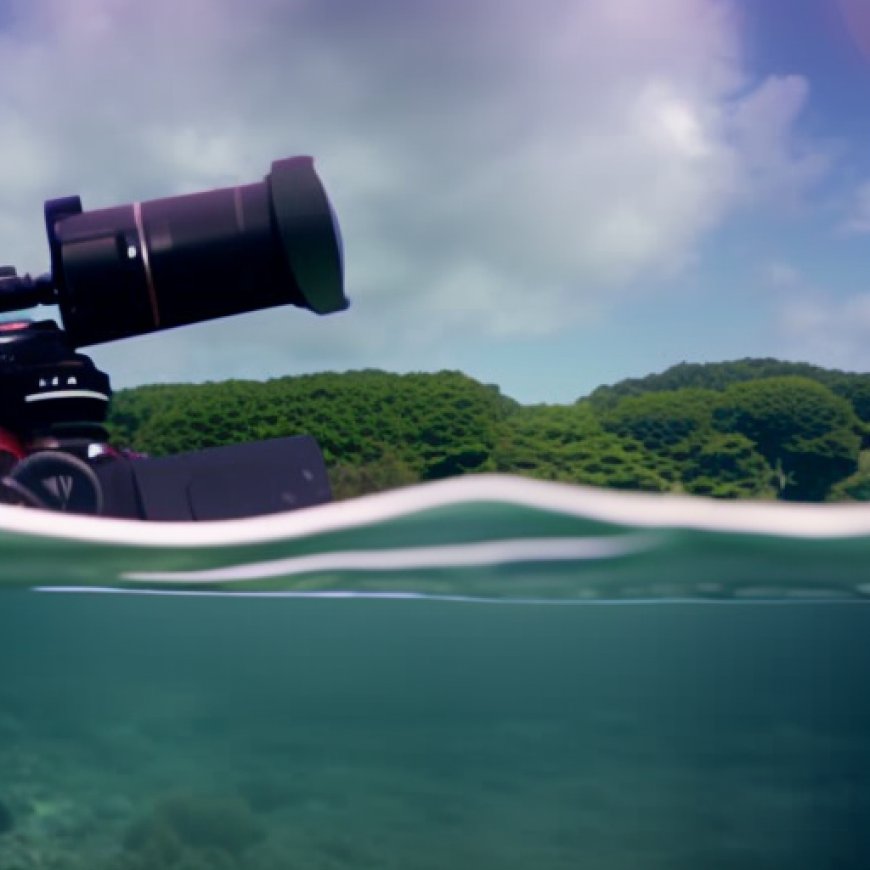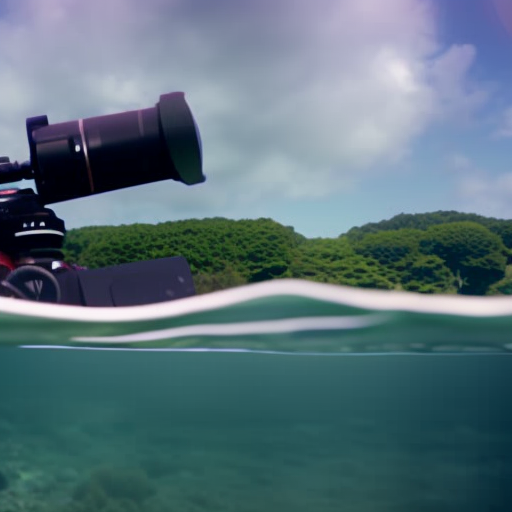New Ways of Catching, Producing Seafood Could Boost Health of Aquatic Ecosystems | Sustainable Brands
New Ways of Catching, Producing Seafood Could Boost Health of Aquatic Ecosystems Sustainable Brands


More Sustainable Catch Methods and Cultivated Seafood Can Help Protect Marine Ecosystems
More conscientious catch methods and the rise of cultivated seafood could help take the pressure off of overfished marine ecosystems — whose health is critical for planetary health.
Just over 70 percent of our planet is covered in water. And around 250,000 known species live beneath the surface of all that water — everything from whales the size of buildings to water fleas barely a millimeter long.
The health of this vast array of sea life is imperative for a healthy planet — everything from the air we breathe to the stability of the Earth’s climate depend to some degree on the ability of sea turtles, dolphins, fish, and countless other aquatic life forms to live and thrive. The world’s oceans supply about half the oxygen we breathe and absorb roughly 25 percent of the CO2 our industrial activities emit on a regular basis; and their inhabitants also play a crucial role in these processes: Marine worms convert organic material into carbon dioxide, which marine plants photosynthesize; while fish are vital for the production of the world’s oxygen, plus the sequestration of all that carbon — making them a key tool in fighting climate change.
Overexploiting the Oceans — A Zero-Sum Game
According to the United Nations Food and Agriculture Organization, the fishing industry removed and killed up to 2.7 trillion fish each year between 2007 and 2016. And as fish consumption continues to increase every year around the globe, estimates forecast that the world’s oceans could be virtually empty by 2048.
Another issue with modern-day, industrial fishing is the problem of “bycatch” — the hundreds of thousands of dolphins, sea turtles, sharks and whales that die each year from getting entangled in fishing nets.
Depleting the planet of the world’s marine wildlife negatively affects coastal civilizations in parts of Africa, Asia and Latin America — as many impoverished communities have no choice but to catch local fish to feed themselves and their families. But it’s not just the poor that are in trouble from overfishing: The fishing industry itself will also be in quite a bind the day there are barely enough fish to catch — especially as many farmed fish are fed wild fish from the oceans — not to mention the additional effect on global biodiversity, which is already in danger of destabilization from industrial activities.
“Aquatic animal welfare is important for environmental protection because of its interconnectedness with water quality, antimicrobial resistance and food safety,” Christine Xu, head of strategic initiatives for the Aquatic Life Institute, an international organization that conducts research and provides advice on aquatic welfare, told Sustainable Brands® (SB).
The organization also works with corporates to incorporate aquatic-animal welfare commitments into their business practices.
“In fisheries, more gentle catch and handling methods for fish onboard fishing vessels means lower bycatch and mortality, which helps both welfare and conservation efforts of fish populations,” she added.
Foodtech Innovators Growing Solutions
Scientific innovation in food production is offering an even more effective solution — and foodtech startups including Aqua Cultured Foods, Revo Foods and Umami Meats are producing real, lab-grown seafood without killing or harming any fish (much less other aquatic species).
As with cell-based (or cultivated) meat, cell-based fish and other seafood alternatives are making a splash — taking cells from fish and potentially other aquatic animals and lab-growing them into a variety of real seafood products — and entrepreneurs and investors are embracing the lucrative opportunity to relieve pressure on the oceans.
“We need a new solution to feed people nutritious seafood without compromising fish stocks. Cell-cultured seafood provides a sustainable alternative that alleviates pressure on wild fish populations, allowing marine ecosystems to recover and thrive,” Mia Montanile, associate director of corporate communications for cell-based seafood company BlueNalu, told SB.
As communications manager and sustainability lead Shara Narsipur explained, California-based BlueNalu (which has already partnered with food giants such as Nomad Foods to scale the delivery of sustainably produced, cell-cultured seafood products in Europe) uses its platform to make a variety of seafood products — focusing on species that are difficult to farm raise, susceptible to contaminants, vulnerable in the wild, and primarily imported. Narsipur said the team is excited about the progress with its first offering, bluefin tuna toro.
The Future of Cell-Based Seafood
In 2022, cultivated meat and seafood companies received close to $900 million from investors, with a cumulative all-time investment of nearly $3 billion, according to the Good Food Institute; and the cultivated-seafood industry is projected to see a compound annual growth rate (CAGR) of 2.1 percent through 2030. But a few hurdles remain before it becomes available in local supermarkets.
As Montanile explained, BlueNalu “is focused on continuing our scale-up journey — getting regulatory approval in the US, Singapore and additional nations around the world; and then launching our products into commerce within selected restaurants. In tandem, we’re working with culinary partners to perfect our product and conducting market research around the world to home in on consumer preferences in each region we plan to go to market.”
As with animal products made from plants and cells, cultivated seafood startups are ramping up production to save our planet — which of course includes that 70 percent covered in water. And this may only be the beginning.
“We have already completed a comprehensive, techno-economic analysis based upon our process parameters; and we are making plans for long-term, large-scale commercialization,” Montanile concluded.
Author
Roberto Guerra
Roberto Guerra is a bilingual writer, editor, entrepreneur, corporate engagement and communications specialist, and US Air Force veteran with a bachelor’s degree in Journalism from Universidad de
SDGs, Targets, and Indicators Analysis
1. Which SDGs are addressed or connected to the issues highlighted in the article?
- SDG 14: Life Below Water – The article discusses the importance of marine ecosystems and the negative impacts of overfishing on these ecosystems.
- SDG 2: Zero Hunger – The article mentions the impact of overfishing on coastal civilizations and their ability to feed themselves.
- SDG 12: Responsible Consumption and Production – The article highlights the need for more sustainable and responsible fishing practices.
- SDG 13: Climate Action – The article emphasizes the role of marine life in fighting climate change through oxygen production and carbon sequestration.
2. What specific targets under those SDGs can be identified based on the article’s content?
- Target 14.4: By 2020, effectively regulate harvesting and end overfishing, illegal, unreported and unregulated (IUU) fishing, and destructive fishing practices and implement science-based management plans, to restore fish stocks in the shortest time feasible.
- Target 2.4: By 2030, ensure sustainable food production systems and implement resilient agricultural practices that increase productivity and production, that help maintain ecosystems, that strengthen capacity for adaptation to climate change, extreme weather, drought, flooding and other disasters and that progressively improve land and soil quality.
- Target 12.3: By 2030, halve per capita global food waste at the retail and consumer levels and reduce food losses along production and supply chains, including post-harvest losses.
- Target 13.2: Integrate climate change measures into national policies, strategies and planning.
3. Are there any indicators mentioned or implied in the article that can be used to measure progress towards the identified targets?
- Indicator 14.4.1: Proportion of fish stocks within biologically sustainable levels.
- Indicator 2.4.1: Proportion of agricultural area under productive and sustainable agriculture.
- Indicator 12.3.1: Global food loss index.
- Indicator 13.2.1: Number of countries that have communicated the establishment or operationalization of an integrated policy/strategy/plan which increases their ability to adapt to the adverse impacts of climate change, and foster climate resilience and low greenhouse gas emissions development in a manner that does not threaten food production.
SDGs, Targets, and Indicators Table
| SDGs | Targets | Indicators |
|---|---|---|
| SDG 14: Life Below Water | Target 14.4: By 2020, effectively regulate harvesting and end overfishing, illegal, unreported and unregulated (IUU) fishing, and destructive fishing practices and implement science-based management plans, to restore fish stocks in the shortest time feasible. | Indicator 14.4.1: Proportion of fish stocks within biologically sustainable levels. |
| SDG 2: Zero Hunger | Target 2.4: By 2030, ensure sustainable food production systems and implement resilient agricultural practices that increase productivity and production, that help maintain ecosystems, that strengthen capacity for adaptation to climate change, extreme weather, drought, flooding and other disasters and that progressively improve land and soil quality. | Indicator 2.4.1: Proportion of agricultural area under productive and sustainable agriculture. |
| SDG 12: Responsible Consumption and Production | Target 12.3: By 2030, halve per capita global food waste at the retail and consumer levels and reduce food losses along production and supply chains, including post-harvest losses. | Indicator 12.3.1: Global food loss index. |
| SDG 13: Climate Action | Target 13.2: Integrate climate change measures into national policies, strategies and planning. | Indicator 13.2.1: Number of countries that have communicated the establishment or operationalization of an integrated policy/strategy/plan which increases their ability to adapt to the adverse impacts of climate change, and foster climate resilience and low greenhouse gas emissions development in a manner that does not threaten food production. |
Behold! This splendid article springs forth from the wellspring of knowledge, shaped by a wondrous proprietary AI technology that delved into a vast ocean of data, illuminating the path towards the Sustainable Development Goals. Remember that all rights are reserved by SDG Investors LLC, empowering us to champion progress together.
Source: sustainablebrands.com

Join us, as fellow seekers of change, on a transformative journey at https://sdgtalks.ai/welcome, where you can become a member and actively contribute to shaping a brighter future.








